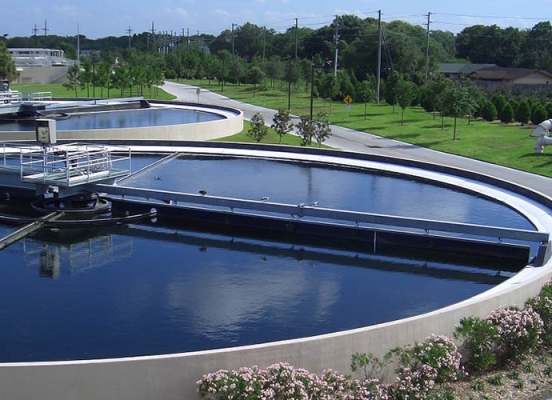Water and Wastewater Treatment Market in India
India has 2.45% of the land area in the world, is home to 17% of the world’s population, and accounts for 4% of the water resources of the planet. There is a clear disparity between the demands of the population and the water available, which makes the judicious use and reuse of water important.
Urbanization, increasing population, and rapid industrialization means that demand for water is expected to rise 20 percent within the next decade. Moreover, depletion of groundwater levels due to irrigation demand in major river basins is expected to be a reality by 2050.
Few quick facts and figures:
- Around 60 Crore people in India face water stress
- 75% of the households in India do not have drinking water on their premise and 85% of the rural households do not have piped water access
- India is currently ranked 120 among 122 countries in the water quality index. 70% of the water is contaminated
- India ranks 132 in the world in per capita water availability
In India, there is policy support for recycling and reuse of water. It began with regulating industrial water consumption and enforcing mandatory water reuse targets for industries.
Cities have set their own stringent targets for wastewater treatment and recycle. The Ministry of Jal Shakti, Government of India (Ministry), is responsible for the formulation and administration of rules and regulations relating to the development and regulation of the water resources in India.
1. Industrial Water and Wastewater Treatment
Out of all the industrial wastewater produced in the country, only 60% gets treated. Clearly, there is a huge gap between the amount of wastewater generated and the amount treated.
In industries, about 0.013468 billion cubic meters of wastewater is generated daily, of which 60% is treated. In the case of small scale industries, which cannot afford wastewater treatment plants, central effluent treatment plants (CETPs) are used. The most commonly used treatment techniques are dissolved air flotation, dual media filter, activated carbon filter, and tank stabilization. Treated water from CETPs is discharged into rivers.
The major industrial sectors for water and wastewater treatment in India are
- Thermal Power Plants
- Refinery and Petrochemical plants
- Steel production plants
- Food and beverage plants
- Pharma units
2. Municipal Water and Wastewater Treatment
According to the Central Public Health and Environmental Engineering Organization (CPHEEO), 70–80% of the total water supplied for domestic use gets generated as wastewater. Estimates from Class–I and Class–II cities which constitute 72% of India’s urban population, place daily water consumption per capita at 98 liters. As per CPCB reports, total wastewater generation from Class I and Class II towns in the country accounts to 35,558 and 2,696 million liters per day respectively. When this figure is compared with the capacity of all the sewage treatment facilities in these cities, i.e., 11,553 and 233 million liters per day, it is found that full capacity is reached and 26,468 liters of water is left untreated.
In India, there are 234 STPs. Most were developed under river action plans and are located in cities along major river banks. The technologies employed to treat most of the wastewater is the “Activated Sludge Process” and “Anaerobic Sludge Blanket Technology”.
Conventional water treatment processes are expensive and require a lot of maintenance. Sludge removal, treatment, and handling have been observed to be the most neglected areas in the operation of the STPs in India. The treatment facilities created for wastewater from all sources suffer from issues like improper design, poor maintenance, frequent electricity breaks, and a lack of manpower.
3. Government Initiatives which drive the water and wastewater treatment market:
AMRUT – 500 Cities will benefit from a program that improves urban water infrastructure.
SMART City Project – 100 Smart cities to be built. The central government will invest a total of Rs. 48,000 Crore in 100 cities across the country for 5 years
Namami Gange Program – The project aims to ensure that no untreated wastewater enters the Gange. The framework for this PPP model would be tried and tested and can be implemented for future projects.
Zero Liquid Discharge for specific industries to enforce them to wastewater reuses and alternate resources. Major Industries to follow ZLD in India are Coal Fired Thermal Power Plants, Distillery (Molasses Based), Steel Plants, Textile (Wet Processing), and Pulp & Paper (Large Wood-Based).
4. Seawater Desalination
The widening gap between the growing water needs of the population and scarcity in supply in major coastal cities in India is giving rise to alternative water sources. Desalination water technology is widely used in water-scarce states such as Gujarat, Tamil Nadu, and Rajasthan. India has a coastline of 7,517 km which provides a huge opportunity for desalination plants in India. As per the Desalination Association of India, there are more than 1000 membrane-based desalination plants of various capacities ranging from 20 m3/day to 10,000 m3/day. Most of the large desalination plants in India are in the Municipal sector. Due to the degradation of water resources and the growing population in major cities, NITI Aayog is planning to set up desalination plants in Chennai, Mumbai, Kolkata, Surat, and Vizag.
To know more, please check BDB India Pvt. Ltd.

